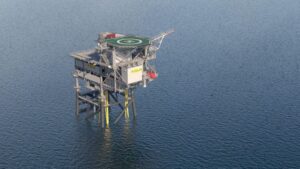“We discovered that the redox center for electro-catalytic reaction is switched between metal and oxygen, triggered by light,” said Associate Professor Xue, one of the team leaders from the Department of Materials Science and Engineering under the NUS College of Design and Engineering. “This largely improves the water electrolysis efficiency.”
The discovery has been detailed in a research paper published in the scientific journal Nature on 26 October 2022.
Accidental breakthrough
Under normal circumstances, Xue and his team may not have been able to come across such a groundbreaking discovery. But an accidental power trip of the ceiling lights in his laboratory almost three years ago allowed them to observe something that the global scientific community has not yet managed to do.
Back then, the ceiling lights in Xue’s research lab were usually turned on for 24 hours. One night in 2019, the lights went off due to a power trip. When the researchers returned the next day, they found that the performance of a nickel oxyhydroxide-based material in the water electrolysis experiment, which had continued in the dark, had fallen drastically.
“This drop in performance, nobody has ever noticed it before, because no one has ever done the experiment in the dark,” said Xue. “Also, the literature says that such a material shouldn’t be sensitive to light; light should not have any effect on its properties.”
The electro-catalytic mechanism in water electrolysis is a very well-researched topic, while the nickel-based material is a very common catalytic material. Hence, in order to establish that they were on the verge of discovering something groundbreaking, Xue and his team embarked on numerous repeated experiments. They dug deeper into the mechanics behind such a phenomenon. They even repeated the experiment outside of Singapore to ensure that their findings were consistent.
Next steps
With their findings, the team is now working on designing a new way to improve industrial processes to generate hydrogen. Xue is suggesting making the cells containing water to be transparent, so as to introduce light into the water-splitting process. “This should require less energy in the electrolysis process, and it should be much easier using natural light. More hydrogen can be produced in a shorter amount of time, with less energy consumed.”






